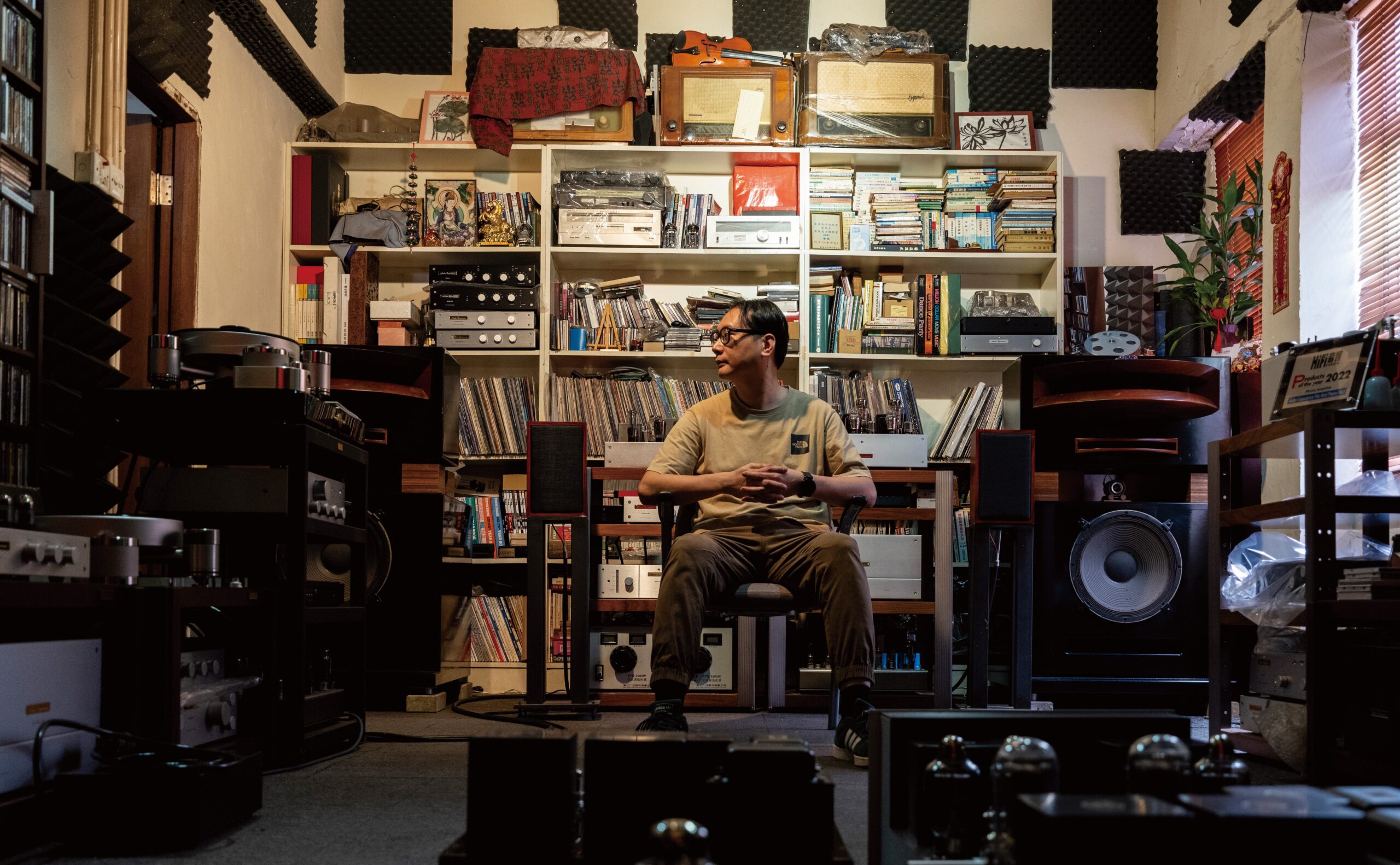Blending traditional craftsmanship with modern design
In Hong Kong there are many low-profile, yet talented, artists and craftsmen, who remain determined to create pieces of fine art that have, without a doubt, stood the test of time.
These artisans may not be famous, but they have committed to preserving the creative gifts of their forebears. In striving to maintain the traditional values of their families, they perpetually seek new ways to continue and adapt their trades through innovation.
In this latest edition of “Flavours of Hong Kong”, we visit two local family businesses: YS-Audio and Little Jadeite. Through the exclusive insights they provide, we share their stories of producing valve tube amplifiers and designing jadeite jewellery. Both businesses’ owners have inherited the precious skills of their fathers, and keep their products and traditions alive by moving with the times.
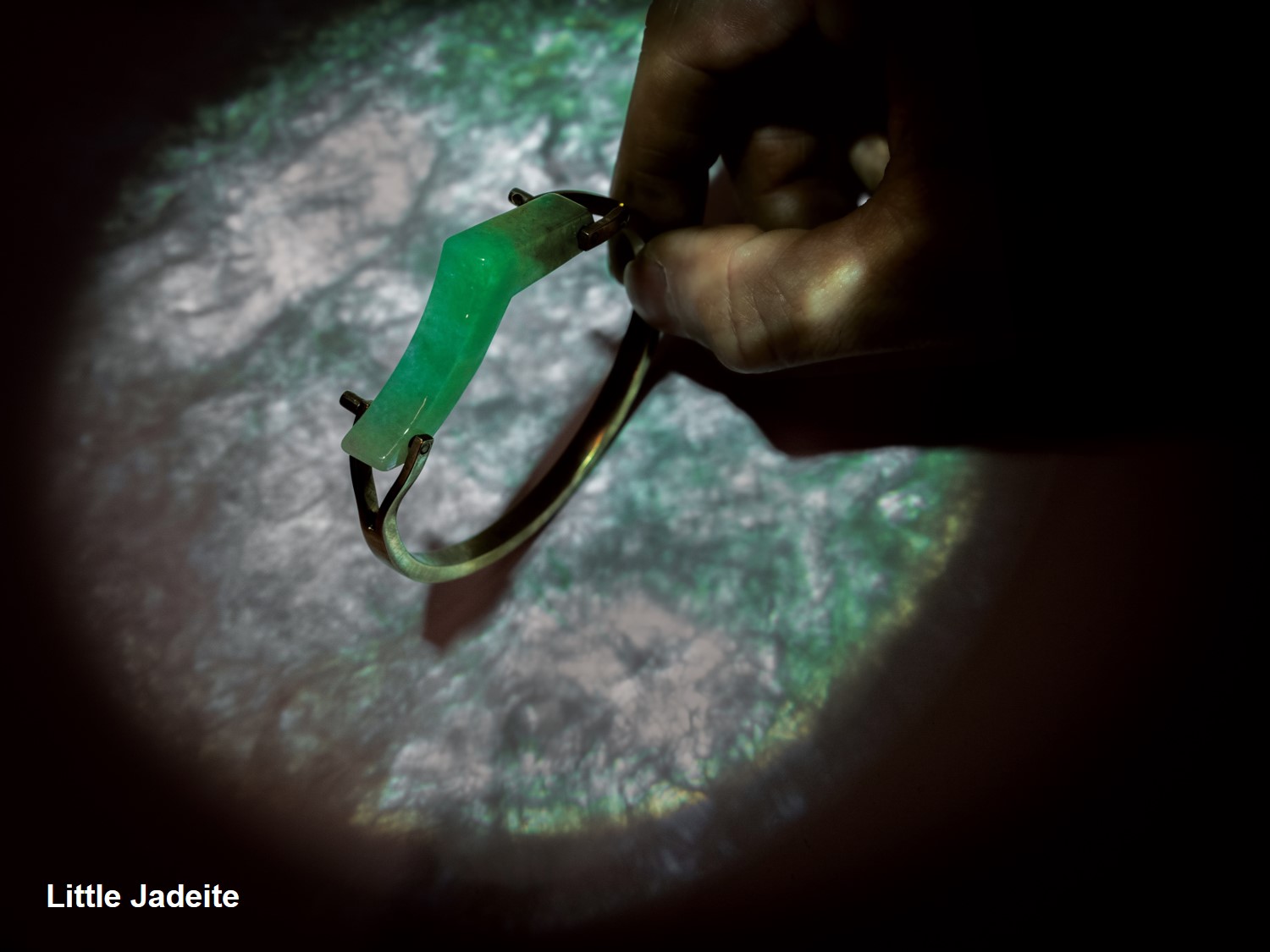
“Each piece of jade has its own character. The jade teaches me how to design: you need to go with the flow.”
Carrying love to new generations
Nestling among many other stores selling clothes, food and electrical appliances, is a small and humble shop named Hang Yue Jadeware, in Wing Lung Street, Cheung Sha Wan. Hang Yue Jadeware sells a wide variety of colourful jade products - each with a unique name such as Eternal Flower, Jade Goldfish, Magpie and Corn.
Hang Yue Jadeware is run by Tam Chow Sang and his wife. Their store is actually in a huge cart, which the couple push to its location every morning, and then unfold the table where they lay out their products. Hang Yue Jadeware is open every day, regardless of the weather.
Tam became an apprentice when he was only 13, and has since accumulated more than 40 years’ experience in jade carving. During the 1970s, Canton Road in Tsim Sha Tsui used to be a trading hub for jade business where merchants purchased raw jade pieces imported from Myanmar, for further processing in Hong Kong. The finished products would then be sold at street stalls on Canton Road.
When Tam Chow Sang first entered the jade industry, he was a wholesaler, until the jade stones he used to sell ceased production. He then shifted his focus to the craft of jade design and carving; he worked from his small, home-based workshop filled with machines and tools.
After years of mastering the craft of jade carving, Tam Chow Sang is very knowledgeable in the colours and “characters” of different stones. Closely observing the jade’s size and shape, he can carve without making a draft, doing it free-hand. Depending on the jade’s colour and patterns, he uses self-made carving disc burrs in various sizes to grind, carve and polish the jade.
“Each piece of jade has its own character. The jade teaches me how to design: you need to go with the flow,” Tam explains. His best works include Eternal Flower, jade-biscuits, jade-corns, jade-abalones, jade-peanuts, and even jade-baby-feet. “I once picked up a piece of jade left by another jade seller; after studying its pattern and colour, I decided to turn it into a mushroom!”
“So I hope I can change people's views by acting as a bridge: introducing the art to more people, by blending modern design with tradition.”
Passing on the craft
Tam Chow Sang’s son Eddy Tam, and his older sister, have many childhood memories of their father working alone in his workshop, amid the high-speed grinding noise the machine produced. However, Eddy didn’t grow up learning much about carving and jade; he recalls: “My sister and I always thought jadeware was simply our parents’ career.” His attitude changed when his father was diagnosed with cancer eight years ago. Looking at his father’s unattended and silent workshop, Eddy felt their home had become cold and empty.
“It was a pity, and I began to wonder how I could be of help with my knowledge of design.” Eddy was studying product design at The Hong Kong Polytechnic University and was preparing his final year project at that time. Originally, he had intended to pursue a career in product design but, following his father’s illness, he decided to learn about jade carving and design. In due course, he established his own brand, Little Jadeite. He even showcased some of his jade jewellery products at his graduation exhibition.

“Jade carving technique has been listed as an intangible cultural heritage item.”
Eddy continues: “Jade is actually closely related to the daily lives and culture of Hong Kong people, and jade carving technique has been listed as an intangible cultural heritage item. But many people hold a stereotyped view that jade is old-fashioned, and I think that’s a pity. Gifting jade can be an act of blessing; it’s a beautiful gesture. So I hope I can change people’s views by acting as a bridge: introducing the art to more people, by blending modern design with tradition.”
Now, Eddy is running Little Jadeite, which mainly produces jade accessories such as rings, necklaces, bracelets, earrings, and so on. Eddy also runs the shop’s social media channels, where he collects customers’ feedback; he then discusses this with his father to fine tune their designs. “I always joke that I’m now calling Eddy my boss,” Tam Chow Sang laughs.
“We feel warmth when wearing jadeware, because we put our hearts into making it with our hands, and that’s what jade symbolises and where its cultural value lies.”
Lasting relationships
Jade looks smooth on its surface and is traditionally designed and carved with round edges. Eddy wants to break this rule, so his designs look sharp and edgy, combining jade with brass to create a more modern look and feel. He employs the technique of mortise and tenon, commonly used in metal crafts, so the jade on the rings and bracelets he produces can be rotated through 360 degrees. And the longer the jade is worn, it absorbs body oil and becomes shinier. To showcase the products he and his father make, he has even built a special trolley to exhibit their wares at exhibitions and markets, allowing customers to learn about the craft firsthand.
Eddy enjoys introducing the craft to curious visitors: telling them how necessary it is to learn the craft from a master, and how long one needs to spend in learning the skills. He explains the various techniques in jade carving: “colour separation” – identifying the colours of each piece of jade, then designing and carving it by segregating the various shades of colours. “Undercutting”, which means carving the jade to accentuate its depth, pattern and shape, producing a three-dimensional piece with delicate details. Then, there is the process of polishing using burrs with coarse, medium and fine grits to bring out the piece’s texture and glow. A jade craftsman does not only need to learn carving skills, but also how to make their own carving tools. Eddy explains: “You need different carving burrs to carve different things. Some of the tools my father uses were handmade by himself, and they’re truly one-of-a-kind.”
Eddy says when Little Jadeite was first established, their main customers were young people. Later, he realised many customers, who are in the habit of wearing jade, are also looking for jade accessories with a more modern design. Some people receive jadeware from their loved ones or elderly relatives, and ask Eddy to help redesign them to give them a second life. “People wear jade believing that it will bring peace, blessings and good health. But over the years, the jade may wear, so at Little Jadeite we help customers to turn broken or damaged jadeware into newly-designed jade accessories, so they can continue to experience their family’s blessings.”
To Eddy, the most precious thing jade conveys is its sentimental value. It connects his family, as well as maintaining many other family relationships. “It’s a genuine blessing for peace, growth, unity and every good fortune,” he continues. “Our generation prizes technological advancement, but it can never replace craftsmanship and the emotions that it carries. We feel warmth when wearing jadeware, because we put our hearts into making it with our hands, and that’s what jade symbolises and where its cultural value lies. That’s why I always ask myself how I can pass on this craft, in this day and age where everything develops and changes so quickly. We need to keep telling our stories. When people appreciate our stories, everything becomes meaningful.”
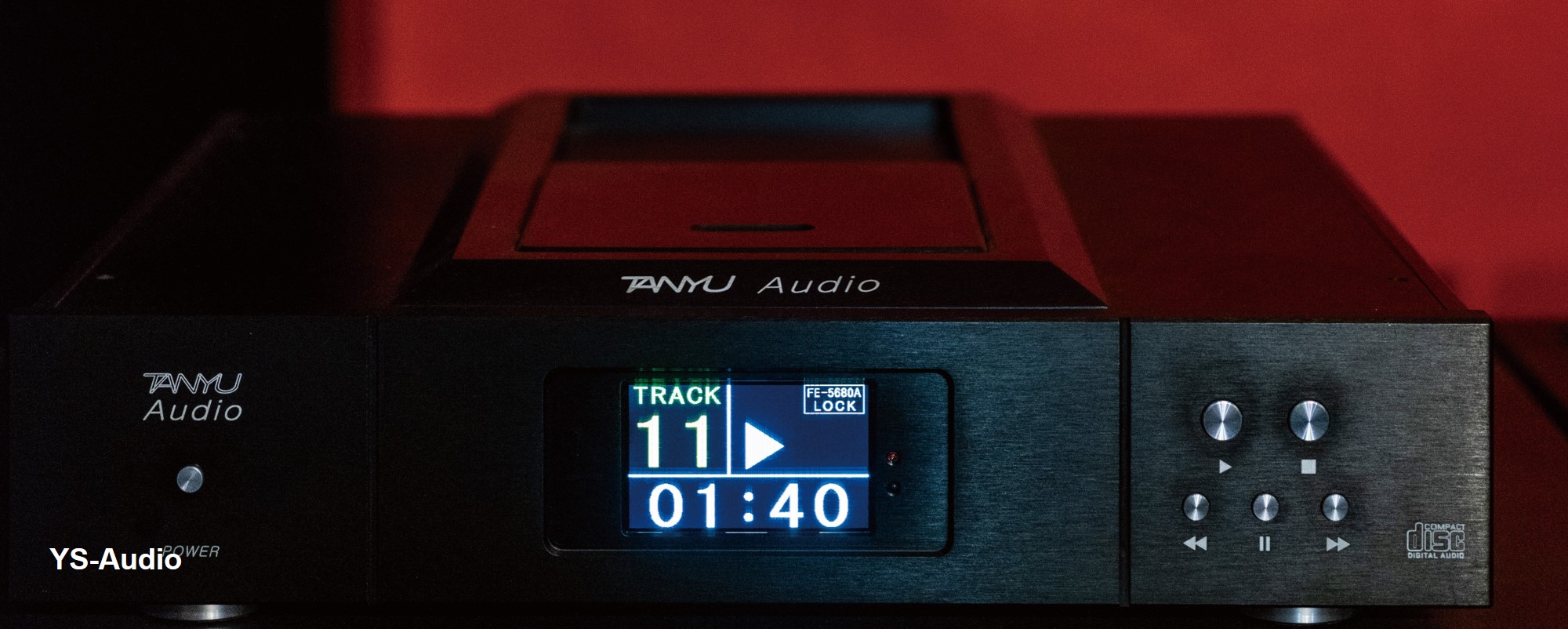
Valve tubes audio products made in Hong Kong
On the day we meet Chui Chi-wai (Nelson), he is working hard as usual in his studio in a factory located in San Po Kong. He is soldering a circuit board when we arrive. To many, this small, humble piece of board is not something they would ever notice. However, it is one of the most important components in making a valve tube amplifier, and will soon be used to produce one ordered by a client. Inside Nelson’s floor-to-ceiling cupboard, the drawers are filled with hundreds of electronic spare parts and wires; each drawer is labelled by hand with different resistor values such as “1W 1K”, “5W 1.2K”, or “475K”. To us, the cupboards, labels and various types of spare parts and tools look overwhelming. However, to Nelson, everything has a purpose, and he knows exactly where everything is. His swift movements as he reaches for components look more like a reflex than a premeditated action.
Over the years, Nelson and his father have produced a great deal of high quality, popular valve tubes audio products in their workshop. Affordable pricing has made it possible for more customers to enjoy a high-quality audio experience, while helping YS-Audio to make its name among local audio lovers.
Do you know what a valve tube looks like? Hong Kongers may recall a scene from one of Hong Kong’s classic movies, Internal Affairs, in which two protagonists played by actors Andy Lau and Tony Leung, are sitting beside each other when they first meet at an audio store in Sham Shui Po. They are listening to the song “Forgotten Time” sung by Tsai Chin, a pop singer from Taiwan. While the music is playing, a close-up shot shows the tungsten wires in the valve tubes emitting a warm yellow colour. And then Tony Leung delivers his most memorable line: “Sweet high notes, crisp middle, strong bass. In a word, transparent!” This line has become one of the classic lines in the history of Hong Kong movies. Thanks to this movie and this scene, audio – a hobby for the few - has become well known to international audiences.
“Strong spending power among local consumers led to the growth of a solid fan-base that helped promote the development of the audio equipment industry in Hong Kong.”
Throughout the years, the audio industry in Hong Kong has evolved into a more mature and diverse market. Various brands from different countries have been introduced into Hong Kong, while products for entry-level users all the way to high-end buyers, are now available. Due to the booming economy in Hong Kong, particularly in the 80s and 90s, strong spending power among local consumers led to the growth of a solid fan-base that helped promote the development of the audio equipment industry in Hong Kong.
Nelson’s father founded YS-Audio in 1988. Since its inception, it has produced many high-quality valve tube power amplifiers, pre-amplifiers, power amplifiers, integrated amplifiers, and phono pre-amplifiers. The Chuis combine their finest skills with the best quality materials to produce the amplifiers on display in their studio. They sell their products under the brand Audio Experience – not just to the Hong Kong market, but also to the rest of the world.
Nelson explains: “Valve tube lovers are looking for a true sense of music, an ultimate sense of texture. Some may even be looking to feel ‘a breath of air’ from within the sound. They are looking for the full extension of high pitch to low pitch frequency, like ripples. This is what they call the movement of sound, which makes it rich and dynamic.” The Chuis have spent over 30 years perfecting their valve tubes audio products, to satisfy the discriminating palate of audio lovers.
From radio to valve tube
The development of Hong Kong’s audio industry was largely due to the success of its electronics industry 50 years ago. This required a massive number of workers for assembling radios, television sets, watches, and other electronic devices. During the 1960s and 1970s, leading European and Japanese electronic producers built their factories in Hong Kong due to its low cost of production. Transistor radios, which require relatively lower skills to produce, remained Hong Kong’s major exported product among all the electronic items produced during that period.
Nelson’s father studied electronics when he was young, and had worked at the General Electric factory in San Po Kong, overseeing the manufacturing of radios; through this experience, he accumulated knowledge and skills in making valve tubes. Nelson was born in the 1970s, when Hong Kong’s electronics industry was enjoying its most prosperous period. Following in his father’s footsteps, Nelson studied electronics and further advanced his knowledge in audio equipment, wiring design and materials. He also learned about the configuration of valve tube amplifiers, transformers, and loudspeakers.
In the 1980s, the Chius opened a store at Allie Plaza in Prince Edward; at that time, Allie Plaza had yet to become a fashion hub. “Allie Plaza was very busy but, rather than selling fashion, it was a place for selling audio equipment, CDs, electronic appliances, and so on. Our store was selling valve tubes, audio equipment and spare parts; if you took the elevator, it was the first one you saw coming up from the ground floor. Later, we saw a few manufacturers from the Mainland selling valve tube amplifier kits at affordable prices. For only around HKD2,000, buyers could get a power amplifier. Some buyers bought a kit and assembled it themselves, but others would come to us for professional assembly after buying the kits. Seeing the popularity of this kit, we later imported the kits directly from Changsha, and introduced them into Hong Kong.” Nelson recalls.
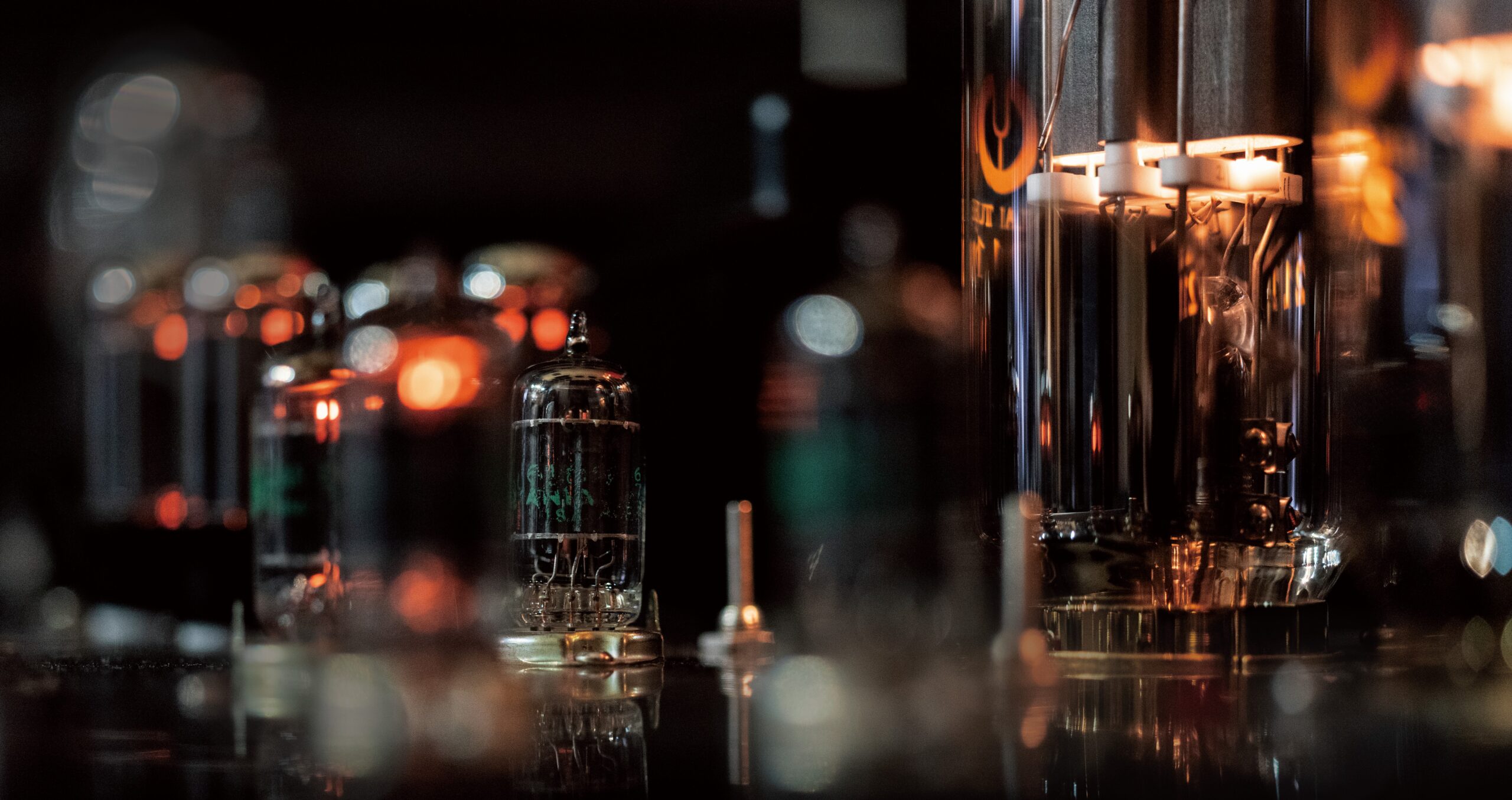
“A truly fine valve tube audio equipment set is incomplete without a full set of carefully-designed wiring and transformer.”
Later, the Chius decided to transform the business, from selling spare parts, to designing and producing its own valve tubes, and eventually building the “Audio Experience” brand. At first, they focused on selling audio equipment on eBay to overseas consumers. Their business survived the American financial crisis in 2008, and has continued to grow with Hong Kong as its main market base.
According to Nelson, consumers in Hong Kong demand high standards in audio quality; they are looking for a crisp, dynamic and authentic audio experience. Since they are obsessed with precision and every single detail of sound quality, they are willing to invest in high-end audio equipment. Nelson says a truly fine valve tube audio equipment set is incomplete without a full set of carefully-designed wiring and transformer.
The Chuis only employ the best materials for their products; for instance, they use the finest brands of cables such as Furutech and Sommer. For transformers, they use mainly leading Japanese brands: Tango in the past and, after Tango ceased production, Hashimoto. “Only the best transformers can guarantee the most stable sound transmission,” asserts Nelson. “This is what audio lovers are looking for; they only want the most genuine sound.”
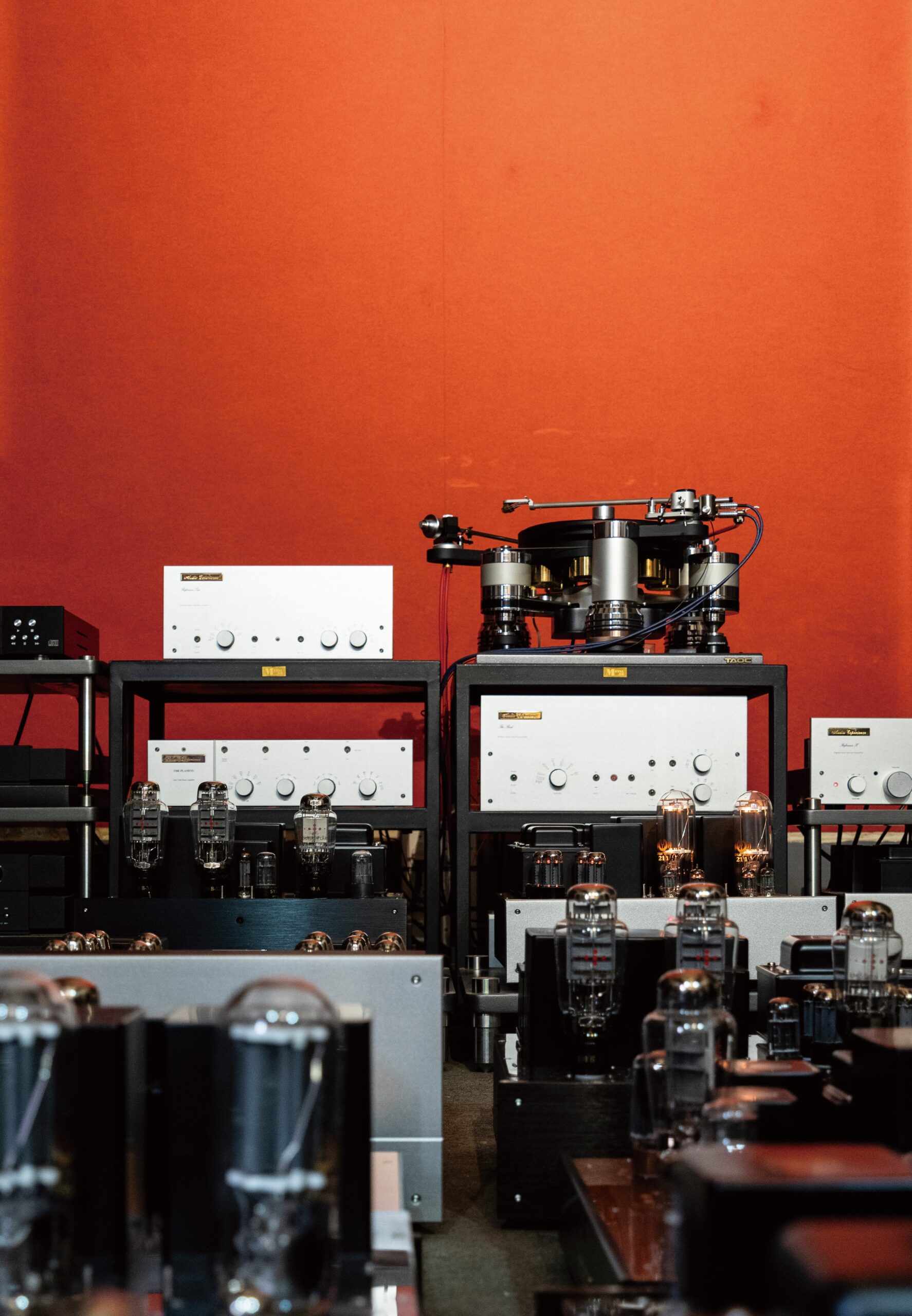
“One time when I arrived at a law firm with my product to be delivered to a lawyer, not only was his desk entirely covered by piles of documents, there were at least 5 or 6 sets of speakers right in front of it.”
Upgrade and iteration
Audio Experience, the brand developed by the Chius, has secured many loyal local customers over the past 20 years; some have even become friends with Nelson. Their relationships go beyond the normal rapport between store owner and customer. In the very beginning, they came to Nelson for assembling and upgrading audio kits but, as their friendships grew, they also exchanged views and knowledge on audio equipment.
Today, Nelson is fully responsible for YS-Audio’s wiring design, production and operation. He listens to customers’ feedback, questions or comments on social media platforms: questions such as “How much gain is needed in my phono preamp?” or “Do I need to adjust the curve equaliser settings?” Nelson answers these questions and takes his customers’ feedback into consideration when developing new products. He keeps improving YS-Audio’s product designs and is confident his customers will remain happy with his never-ending quest for perfection. For just a few thousand Hong Kong dollars, customers can upgrade their equipment.
Thanks to his business, Nelson has become good friends with many interesting people. He continues: “One time when I arrived at a law firm with my product to be delivered to a lawyer, not only was his desk entirely covered by piles of documents, there were at least 5 or 6 sets of speakers right in front of it.” At YS-Audio, Nelson set up an “audition zone” for booked customers to try out different products. A label marked “best sound” stuck firmly to the floor clearly indicates the best position for listening. “One time, I remember a booked client did not leave his seat until he finished listening to the whole of an album. He also called his friends to join him to enjoy beers while listening to the music. Finally, he decided to order my product when he got drunk,” Nelson recalls with amusement.
In recent years, valve tube audio equipment has regained its popularity in Asia, and even in Europe and the USA. But many now favour Chinese brands because of China’s cheaper labour, raw materials and factory costs. Nevertheless, Nelson and his team are committed to continuing to produce affordable and quality products using the finest materials, and employing a pragmatic and flexible approach in their design.
